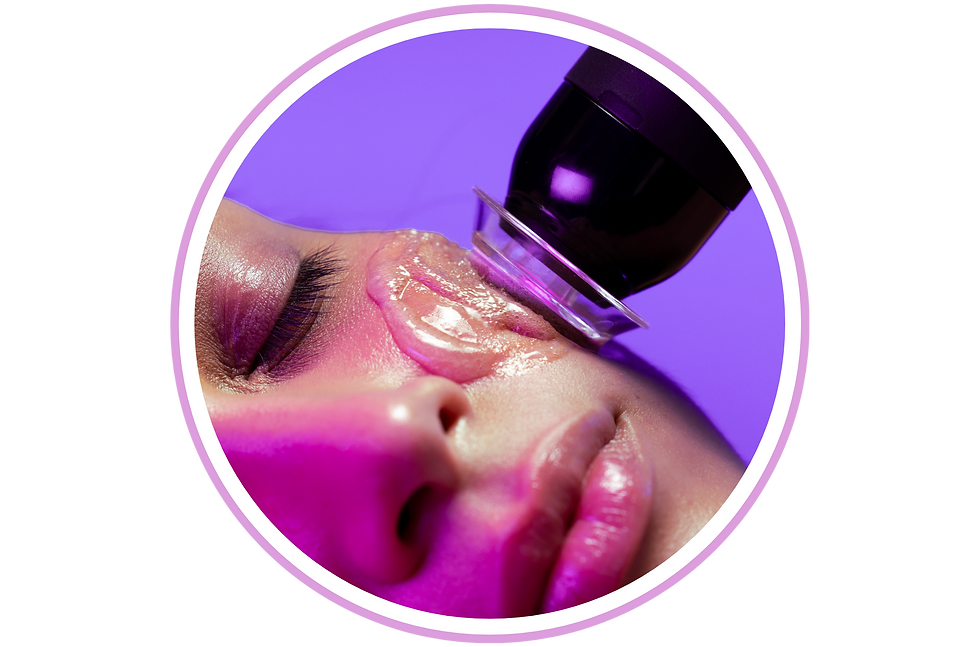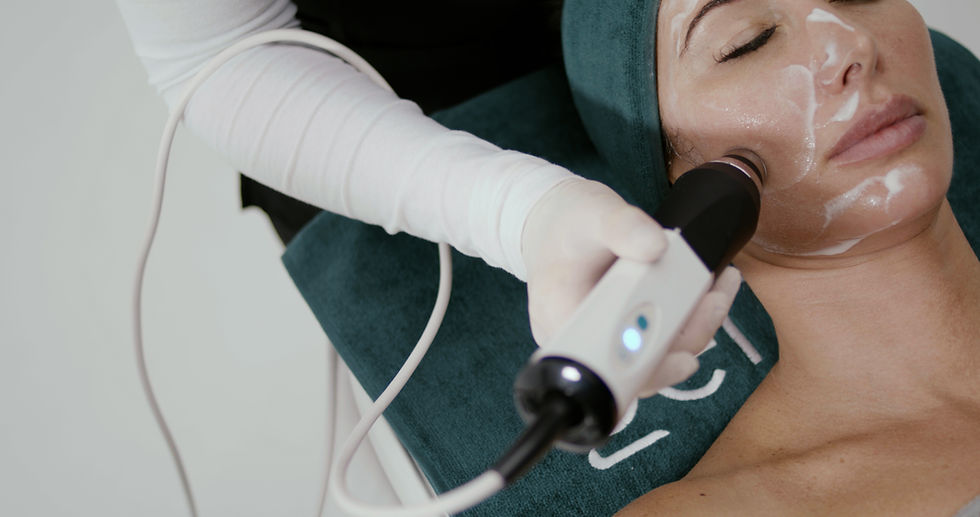Glo2 Facial RF Seasonal FAQs Exploring Winter and Summer Considerations
- Shine Salon

- Aug 13
- 3 min read
As the seasons change, so should our skincare routines.
The weather can significantly impact your skin’s needs, which is why the Glo2 Facial RF (Radio Frequency) treatment has become a favorite year-round.
This non-invasive, collagen-boosting facial delivers real results—but how and when you schedule your sessions can make a big difference depending on the time of year.
In this blog, we’ll answer some of the most common seasonal questions about Glo2 Facial RF so you can plan your treatments with confidence.

💡 Understanding Glo2 Facial RF
The Glo2 Facial RF treatment uses radio frequency technology to:
Stimulate collagen production
Tighten the skin
Improve tone and texture
It’s suitable for all skin types, requires minimal downtime, and delivers visible results.
However, seasonal changes can affect both how your skin responds and how to care for it before and after your treatment.
🔆 Summer Safety Considerations
Q: What are the safety concerns for Glo2 Facial RF in summer?
After a Glo2 treatment, your skin may be slightly more sensitive—especially to UV rays.
This increases the risk of:
Sunburn
Hyperpigmentation
Delayed healing
✅ Post-treatment tips for summer:
Apply a broad-spectrum SPF 30+ sunscreen
Avoid direct sun for 24–48 hours
Schedule treatments for early mornings or evenings
Use wide-brimmed hats and stay in the shade
❄️ Winter Skin Concerns
Q: Are there specific risks during winter?
Yes—cold, dry air can dehydrate your skin, potentially making post-treatment dryness or irritation worse.
✅ Winter skin tips:
Keep skin hydrated before and after treatment
Use products with glycerin, ceramides, or hyaluronic acid
Add a humidifier at home to prevent dry air from pulling moisture from your skin
If you have eczema or rosacea, consult your provider for extra precautions
📆 Frequency of Treatments: Winter vs. Summer
Q: How often should I schedule sessions in the summer?
Summer sun can complicate things slightly, but treatments are still safe with proper care.
✔️ Suggested schedule: Every 4–6 weeks, ideally when you’re not spending long hours outside.
Q: Is the frequency different in winter?
It can be. In colder months, skin tends to lose elasticity and moisture faster.
✔️ Suggested winter frequency: Every 2–3 weeks for clients with dry or aging skin. This helps maintain hydration and glow.
A skincare professional can tailor your schedule based on your unique skin goals and lifestyle.
☁️ Ideal Weather Conditions for Treatments
Q: What weather conditions are ideal for summer treatments?
Cloudy, overcast days are your best friend—UV rays are lower, reducing the risk of post-treatment irritation.
Plan treatments when you can stay indoors afterward.
Q: Are there optimal weather conditions for winter treatments?
Winter treatments can be done anytime, but try to avoid going directly into cold wind or dry indoor heating afterward.
Use protective moisturizers and indoor humidity to reduce dryness.
🧴 Post-Treatment Care: Seasonal Breakdown
Q: What should I do after a summer treatment?
Use soothing products like aloe vera or hydrating serums
Avoid sweat-heavy activities for 24 hours
Reapply sunscreen every 2 hours if outdoors
Stay cool and avoid hot showers or saunas immediately after treatment
Q: How should I care for my skin after winter treatments?
Use rich moisturizers or barrier creams to lock in hydration
Add overnight sleeping masks for extra nourishment
Exfoliate gently 1–2 times per week to prevent flakiness
🌟 A Year-Round Approach to Radiant Skin
Whether it’s the height of summer or the depths of winter, understanding how to adapt your Glo2 Facial RF routine ensures you get the best possible results.
By adjusting your treatment timing, aftercare, and hydration strategies, you’ll support your skin in every season and protect that radiant post-facial glow.
Always consult with a skincare professional to customize your plan to your skin type, climate, and lifestyle.

.png)









Comments